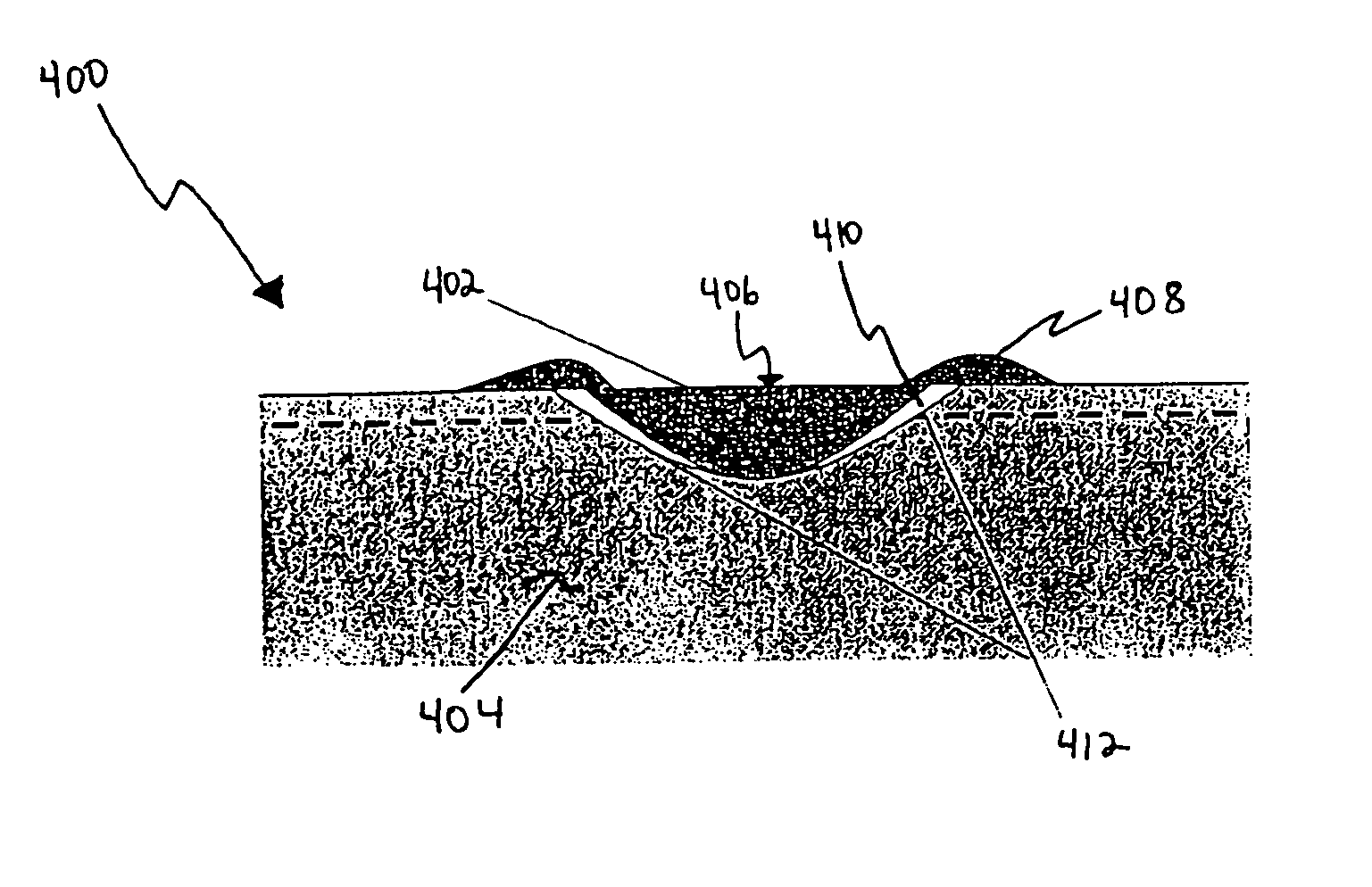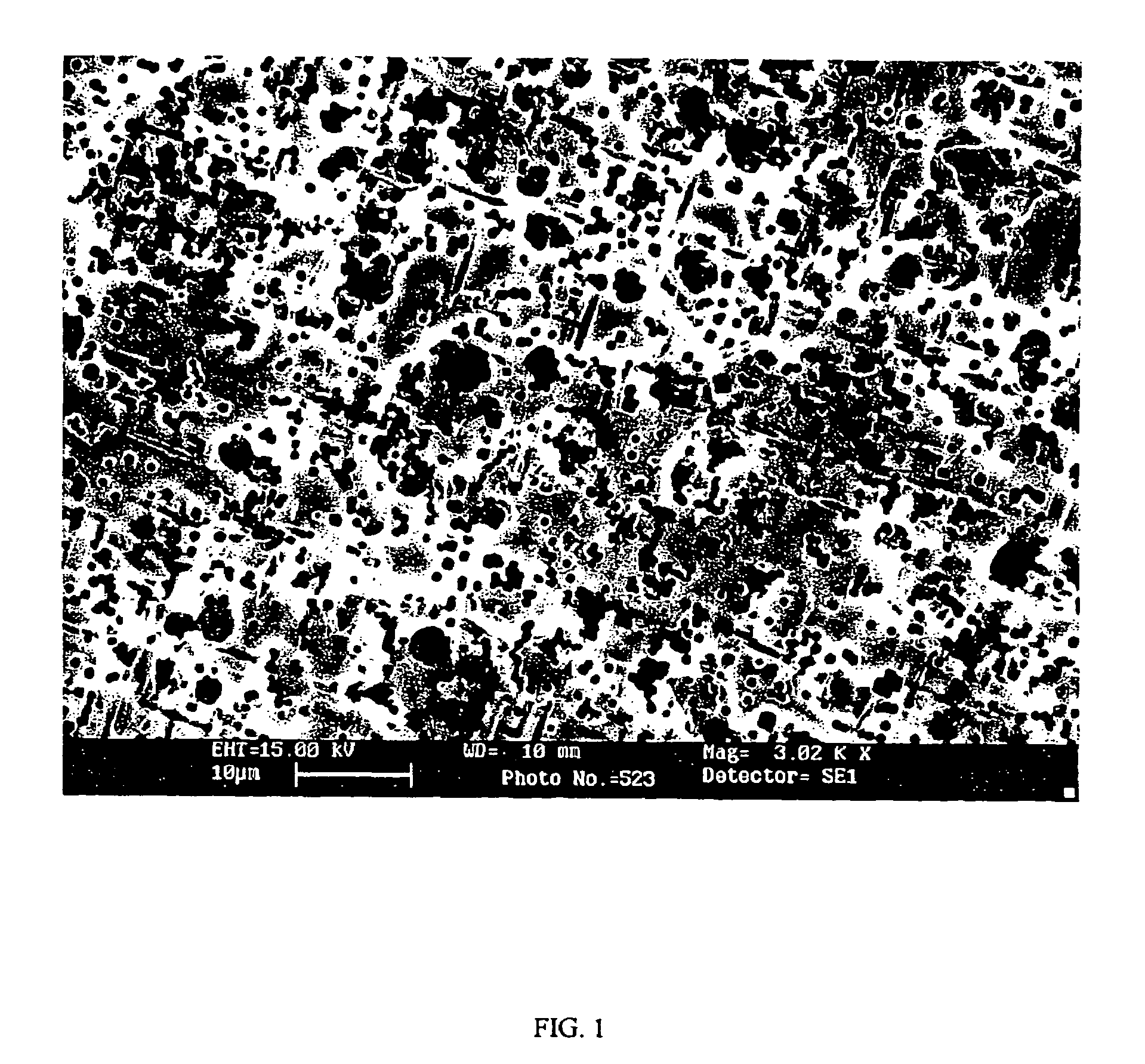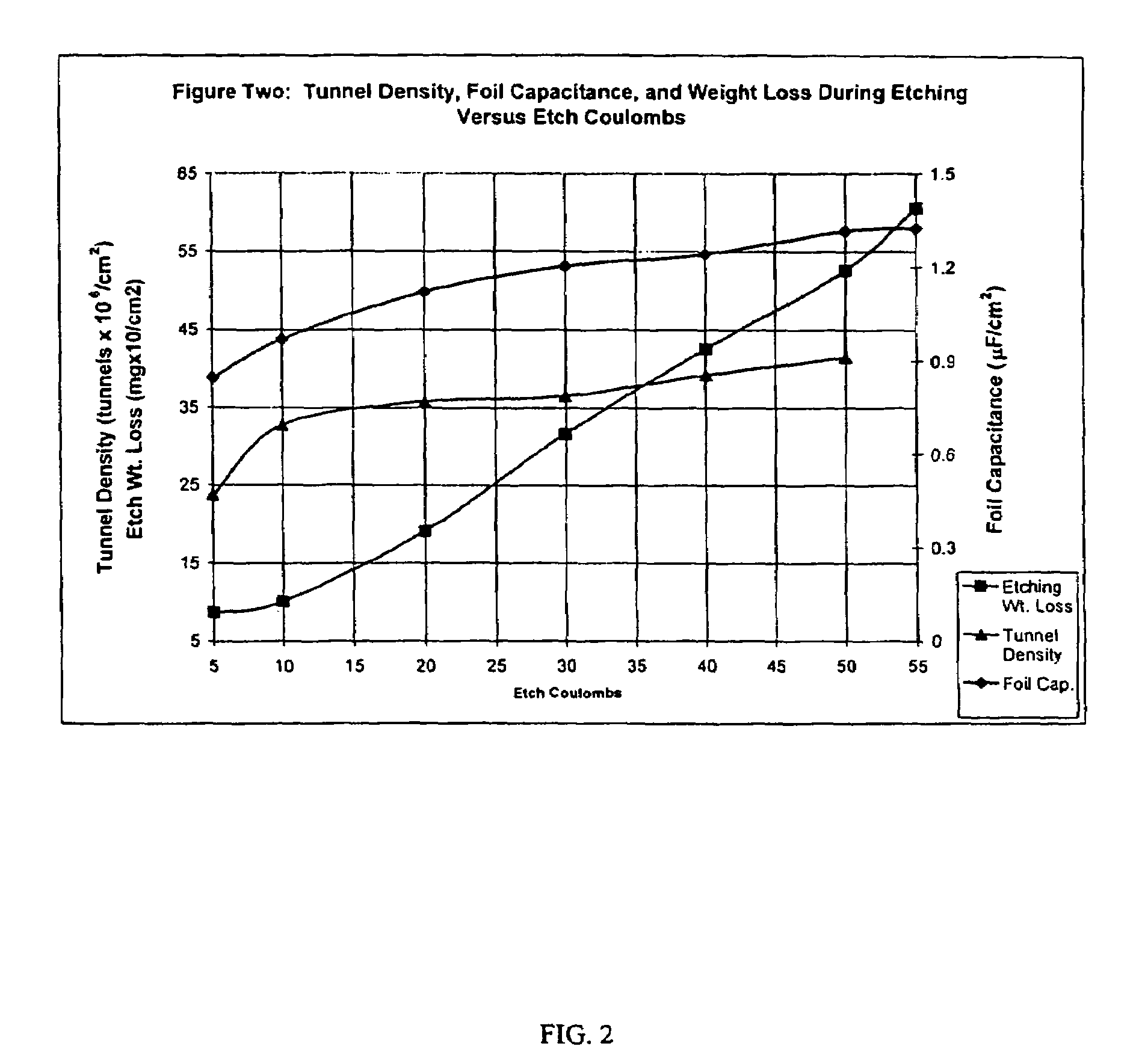Laser marking of raw aluminum anode foil to induce uniform patterning etching
a technology of laser marking and raw aluminum anode foil, which is applied in the direction of capacitor manufacture, variable capacitor, fixed capacitor, etc., can solve the problems of difficult packaging of implantable devices in small packages, patient's pectoral region, and inability to achieve uniform patterning etching, optimum tunnel distribution, and high capacitance
- Summary
- Abstract
- Description
- Claims
- Application Information
AI Technical Summary
Benefits of technology
Problems solved by technology
Method used
Image
Examples
example 1
[0058]A laser was applied to an aluminum foil comprising about 97% high cubicity recrystallized aluminum to create a pattern of marks. A Nd:YAG laser was used to mark the foil. FIG. 6 shows a SEM picture of the resulting foil with the laser marks on the foil. As can be seen in the image, the marks are approximately circular dots. The dots also appear to be pits with elevated edges. This confirms the mark structure shown in FIG. 4.
example 2
[0059]In this example, a portion of a foil, similar to that of Example 1, was marked using a laser as in Example 1. The marked foil was electrochemically etched in aqueous anode electrolyte comprising about 500 PPM sulfate, about 2.6% sodium perchlorate, about 1.3% sodium chloride, and about 20% glycerol, at a temperature of about 80° C. The current density was about 0.15 amps / cm2. FIG. 7 shows a SEM picture of the laser marked foil after etching. In the portion where the laser was applied to create marks, the tunnel initiation is concentrated near the edges of the marks. In the unmarked portion, the tunnel initiation is concentrated near the rolling lines. This example shows that the laser marked spots facilitate etching more strongly than the rolling lines. This is clear evidence that the marks allow for precise positional control of tunnel initiation.
example 3
[0060]In this example, a regular pattern of marks was applied to an aluminum foil comprising about 97% high cubicity recrystallized aluminum. A Nd:YAG laser was used to mark the foil. The same marking conditions were used as in Example 1, however, the laser marking of the foil was performed under an Argon atmosphere. The Argon environment was used to reduce the amount of thermal oxide grown on the foil during the marking process. The chamber for laser marking the foil was purged with Argon for about 80 minutes before marking. After the laser marking process, the foil was etched in the sulfate etch solution and using the conditions described in Example 2. FIG. 8 shows a SEM picture of the etched foil marked under Argon. The tunnel initiation is still concentrated near the laser mark edge, as in Example 2. FIG. 9 shows a SEM picture of the same etched foil, with one mark magnified, which clearly shows tunnel initiation near the edge of the mark, with little tunnel initiation in the la...
PUM
| Property | Measurement | Unit |
|---|---|---|
| diameter | aaaaa | aaaaa |
| diameter | aaaaa | aaaaa |
| thick | aaaaa | aaaaa |
Abstract
Description
Claims
Application Information
 Login to View More
Login to View More - R&D
- Intellectual Property
- Life Sciences
- Materials
- Tech Scout
- Unparalleled Data Quality
- Higher Quality Content
- 60% Fewer Hallucinations
Browse by: Latest US Patents, China's latest patents, Technical Efficacy Thesaurus, Application Domain, Technology Topic, Popular Technical Reports.
© 2025 PatSnap. All rights reserved.Legal|Privacy policy|Modern Slavery Act Transparency Statement|Sitemap|About US| Contact US: help@patsnap.com



